On its anniversary, we celebrate the lasting legacy of Lucio Fulci’s essential zombie film — the perfectly gory grindhouse classic “Zombie”.
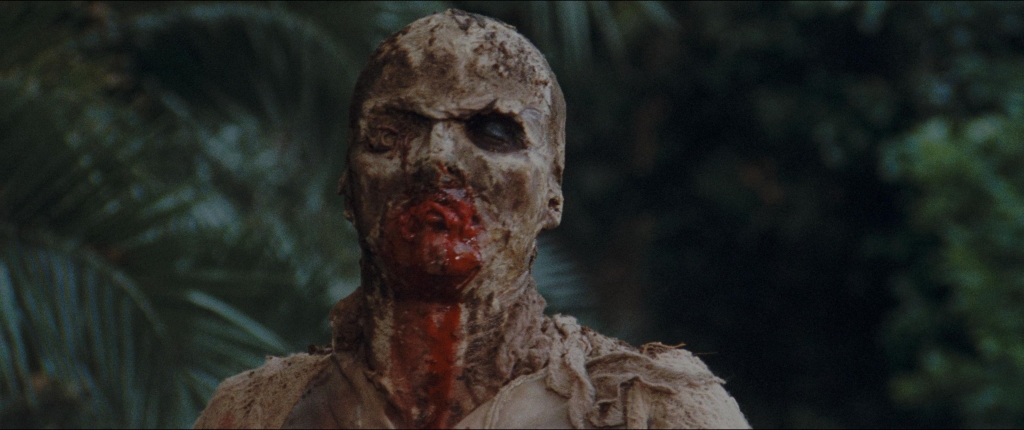
August 25th, 1979… WE ARE GOING TO EAT YOU. The world was warned…
One of my initial memories of the horror genre can be traced back to my very early years, to hazy recollections of first experiencing George A. Romero’s pivotal 1968 masterpiece Night of the Living Dead. A rental from the video stored tucked cozily into our local supermarket, the film left its impressions on me with all the lo-fi grit associated with that archaic way of viewing movies in the late-1980s – VHS.
Rather than scaring the bejesus out of me, Night ignited a curiosity that would span to Universal Studios’ line of classic monster movies.
It all struck at just the right time to morph me into a pint-sized monster kid that would go glossy-eyed over the Pepsi and Doritos tie-ins that unleashed Frankenstein’s Monster, Dracula, Gill Man, and more into a fiesta of epic proportions. Remember that tie-in? (Refresh your memory here on YouTube.)
But I always kept coming back to the pesky Pittsburgh zombies…
Fast forward a small handful of years, and I would experience the glory of Romero’s 1978 follow-up to Night of the Living Dead, the towering classic that is Dawn of the Dead, which ranks firmly among my favorite movies of all time.
Dawn showed me that cinema could say more – A LOT more – and could have a much deeper meaning than I initially realized.
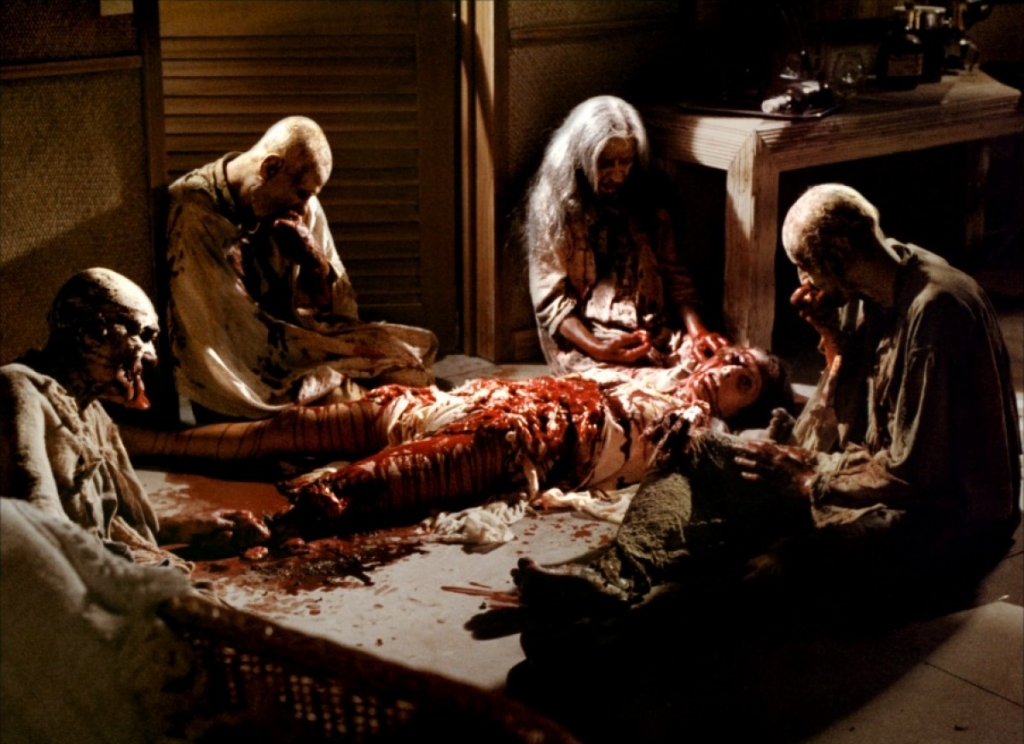
Mind you; I was still too young to connect all the dots. But Dawn resonated in a way many films hadn’t up to that point.
What did this all mean?! And, more importantly, how awesome was it seeing those blue-skinned zombies rip stomachs open to reveal those grotesquely pink innards?! It was the turning point and marked my lifelong love affair with zombies.
Speed ahead a couple more years, and I would experience another zombie effort that would lite the wick to my grindhouse affections.
A year after Romero unleashed Dawn of the Dead on audiences, Italian director Lucio Fulci would craft an unofficial sequel in the form of 1979’s Zombie.
Notorious for its shocking violence that came equipped with a complimentary barf bag, Zombie has garnered a following that has seemed to grow in recent years, much like the undead ghouls that shuffle about the tropical locales where the film takes place.
This may all be indebted to the rise of the zombie genre itself, which enjoyed a massive resurgence in a post-9/11 world with 28 Days Later, Shaun of the Dead, the 2004 remake of Dawn of the Dead, and Romero’s big-budgeted Land of the Dead.
Toss in The Walking Dead, its slew of spin-offs, and countless other comics, toys, and games, and you now have the top monster in the entertainment industry.
In this whirlwind, discovering Fulci’s Zombie was something of a revelation.
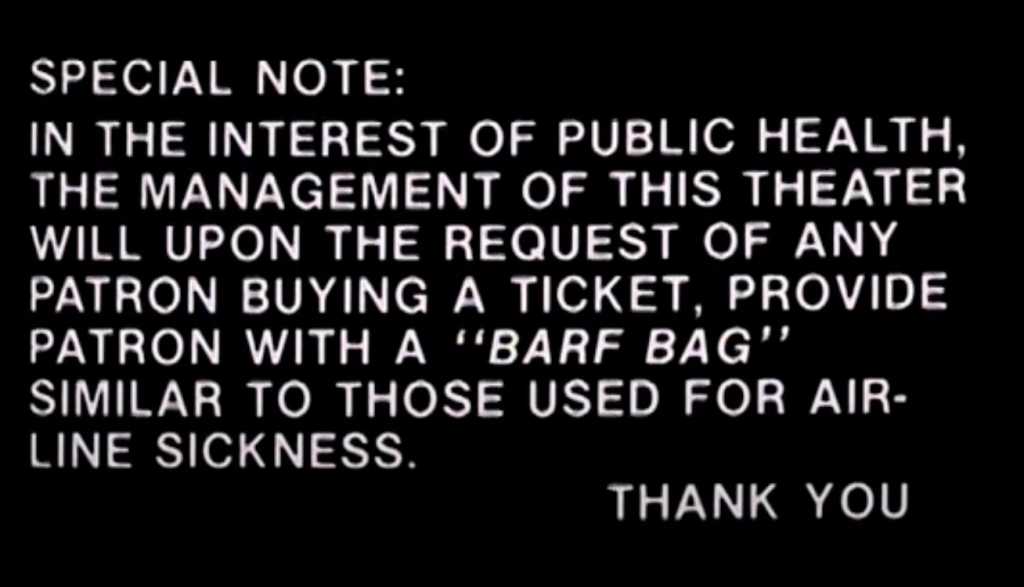
How could a film like this elude me for some many years?!
With my exploding interest in cult cinema and the grindhouse treasures of the ‘70s and ‘80s, Zombie shuffled its way to the front lines as probably the ULTIMATE grindhouse movie I had seen up to that point. It packed it all and did it with gut-slurping relish like someone sucking in a delicious string of spaghetti dunked in tomato sauce.
To me, Romero’s efforts were almost unparalleled high art with their searing political and social commentary that continues to reverberate to this very moment.
And then, this mucky Italian effort throws caution to the sea breeze and wallows in decayed filth. Staying true to the zombie genre’s voodoo origins while also wedging itself into Romero’s vague undead uprising that found an America ripping itself limb from limb, Zombie was an exotic beast, indeed.
Zombie is a film for acquired tastes. Pure and simple.
It’s a straight-up gorefest that will test the limits of even the most hardened horror fans. Just as the jungle cannibal craze would simultaneously overrun drive-in and 42nd Street screens across this nation, Zombie gave us the dangerous thrills the exploitation junkies craved in an unquestionably rough time.
I can just imagine the hardened crowd of 42nd Street marveling at the zombie versus shark moment that was accomplished at a time when CGI wasn’t dominating the silver screen.
This movie was no bullshit, which is part of its immortal charm.
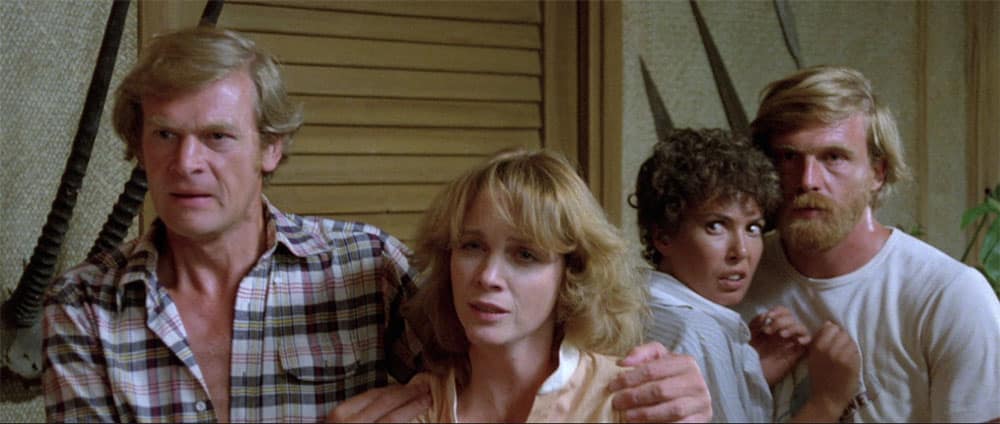
For those who haven’t seen Fulci’s Zombie, the film picks up with a boat aimlessly drifting into the New York harbor, which upon investigation by authorities, is revealed to have a few pesky undead aboard hungry for Coast Guard flesh.
Once authorities get the nasty situation under control, they seek out Anne Bowels (played by Tisa Farrow), who happens to be the daughter of the boat’s owner.
It turns out that Anne’s father, who she learns is suffering from an inexplicable illness, is conducting research on the Caribbean island of Matul.
With the help of journalist Peter West (played by Ian McCulloch) and a pair of laidback guides – couple Brian (played by Al Cliver) and Susan (played by Auretta Gay) – they arrive on the picturesque island only to discover that it’s being overrun by a mysterious illness that turns all who succumb to it into cannibalistic undead.
Racing to uncover the root cause is Dr. David Menard (played by Richard Johnson), who suspects the events are connected to a voodoo curse that the locals have cast.
While not quite as ponderous as Dawn of the Dead’s attack on consumer culture, Zombie is a zero-frills exercise in what Romero and company sparked in 1968.
This movie knows exactly what it wants to be and goes for it with total abandon.
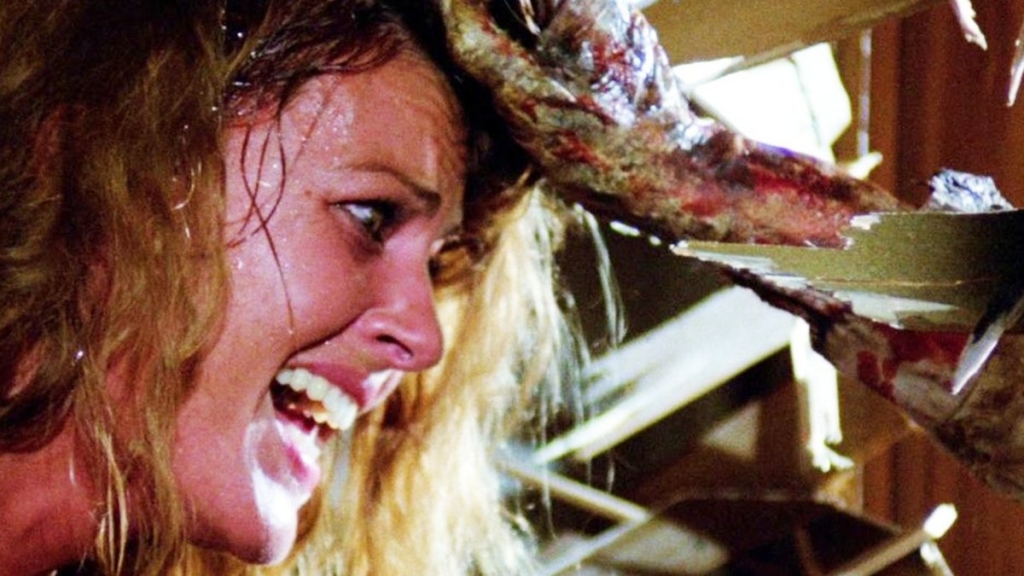
Supposedly written before the release of Dawn of the Dead, which happened to be a huge hit in Italy due in part to the involvement of famed Italian horror director Dario Argento, who produced Dawn and was allowed to do a special European cut of Romero’s film which trimmed the chattier beats in favor of the candy-colored mayhem that left stomach’s churning and eyes bulging.
To tie Zombie to Dawn’s success, the opening and closing New York set pieces were tacked on guerrilla-style, and you had the unofficial sequel ready to satiate the hunger for more undead bedlam. It seemed as though Fulci had paid extra close attention to Argento’s cut of Dawn, as Zombie knows exactly what tickled the fancy of audiences packed into theaters to witness this grand Guignol of carnage.
Set to a moody score from Fabio Frizzi, who skips between sunny island synths and droning organs which stand in for the groans and moans of the undead phantoms wandering Matul, ZOMBIE pulverizes you into submission with its visually striking cannibals, who truly do look like shambling corpses who have just clawed their way through six feet of dirt.
You’ll be in awe as make-up artist Giannetto De Rossi conjures rotted specters festering under decayed flesh entangled with quivering worms and oozing orifices that are the very definition of putrid.
You can practically smell the monsters inching toward you. And when they attack?! Boy, are you in for an endless sea of red slick with slimy entrails that stretch to eternity. And this is just the beginning of what you’re in for when Fulci goes berserk with the death and destruction.
Wait until he springs the splinter in the eye, a sequence that solidified Zombie as a bonafide barf-fest.
I’ll admit that Zombie isn’t particularly well-acted, and the film falls victim to some gaps in logic, which is a staple of Fulci’s work anyway.
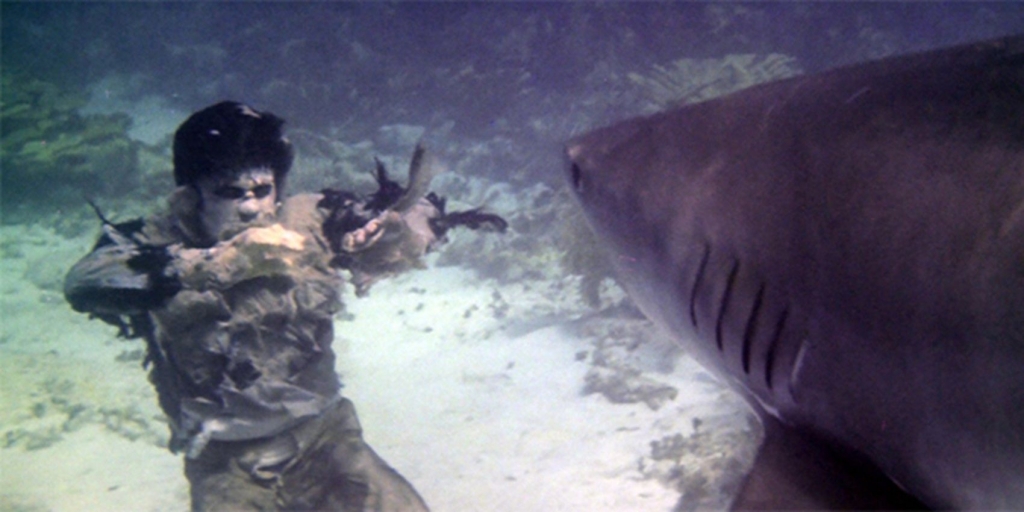
The film possesses the hilarious dubbing so prevalent among the Italian genre work at the time, yet it does avoid some of the unintentionally inane interchanges that marred other dubbed euro efforts.
I will also warn you that the film is slightly sluggish in places. But rest assured that when the action kicks into high gear, you’ll barely have an ass cheek left by the amount of bite this grindhouse grunge has hidden behind its crusted lips.
And then there is the claustrophobic little finale, which ends on a gloriously gothic note that finds swarms of undead laying siege to a rickety church-turned-hospital that concludes in an apocalyptic blaze.
Of course, budget constraints must have been tight, as fancy editing tries to mask limited resources. But I’ll be damned if it isn’t a nasty way for Zombie to go out, registering high on the atmospherics meter with billowing winds and pained cries from the sea of attackers clawing their way in.
And then we have all of our other iconic moments, from the zombie fighting a shark, which was accomplished with one brave soul battling an overfed tiger shark that also happened to be doped up.
It’s a showstopping moment that still leaves people gasping over how the filmmakers did it.
And what about that famed Conquistador graveyard set piece, which reveals the most iconic zombie in all of the film?! Another blast of gothic greatness that not only packs a throat-slashing visual shock but also underlines the sly wit of Zombie.
The gothic settings of classic voodoo zombie films like White Zombie crossed with the exploitation excesses that were all the rage.
It’s the perfect marriage of paying tribute to the past while taking a big toothy bite out of the fleshy fervor that kept grindhouse cinemas chugging along.
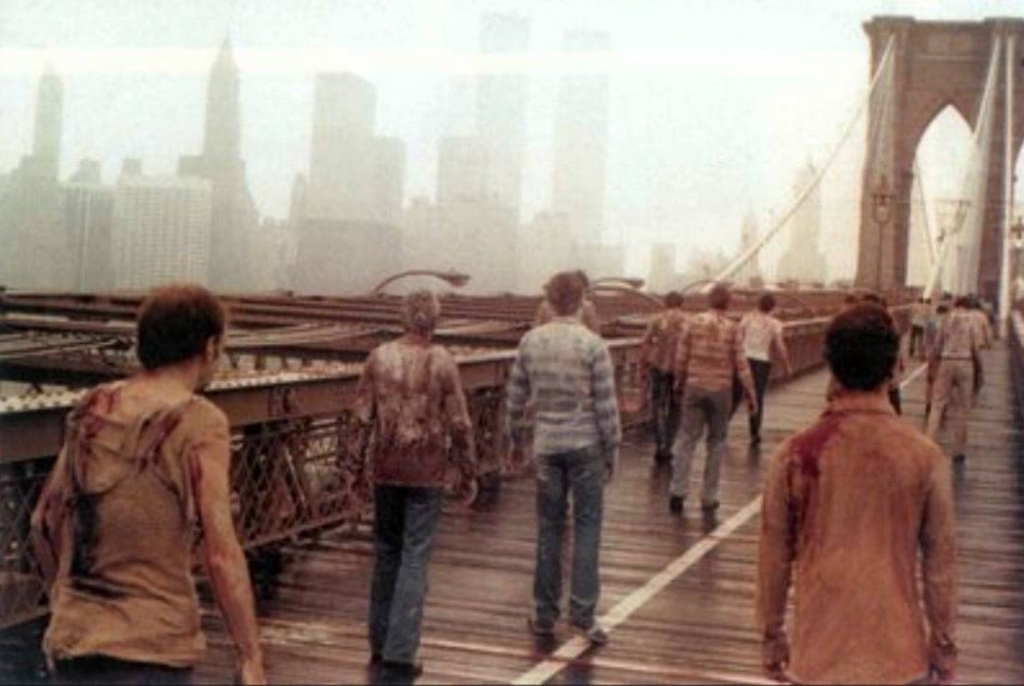
While I said earlier that Zombie isn’t a chiefly intellectual exercise in horror filmmaking, in a post-COVID world, I am amazed by how malleable the film’s final shot turned out to be.
In an overhead shot of the Brooklyn Bridge, zombie hoards lumber hungrily towards the Big Apple, ready to lock their jaws on the exposed skin of the confined citizens. The budget did not allow the traffic to be halted on the bridge, which meant cars flowed freely as if nothing was happening.
A radio report can be heard frantically reporting on the rise of the undead flowing into the city, culminating in the radio announcer falling victim to the hoards.
While it may have been viewed as a gaffe before COVID, under the present-day lens, the cars flowing freely as a deadly plague marches on ever vigilantly is thought-provoking and chilling when held up to our response to COVID-19.
Pandemic be damned! It’s business as usual, whether by our own personal declaration or at the money-hungry edict of companies and politicians ready to sweep the virus right under the rug for the almighty dollar.
At the time of its release, Zombie was a box office success.
It would spark a wave of copycats attempting to top it in the shock value department in Italy. It would also spawn several loose sequels, which diminished in quality with each passing entry. Fulci himself would even return to direct 1988’s Zombie 3, which ultimately found him handing the directing reigns over to Bruno Mattei and Claudio Fragasso due to mounting health problems.
Fulci didn’t totally abandon the walking dead in the wake of Zombie’s success, as he would release his stellar Gates of Hell trilogy — including 1980’s City of the Living Dead, 1981’s The Beyond and The House by the Cemetery — all of which were crammed full of ghoulish antics.
I owe Zombie for acting as the gateway into the “ziti zombie” catacombs that deepened my affection for the subgenre.
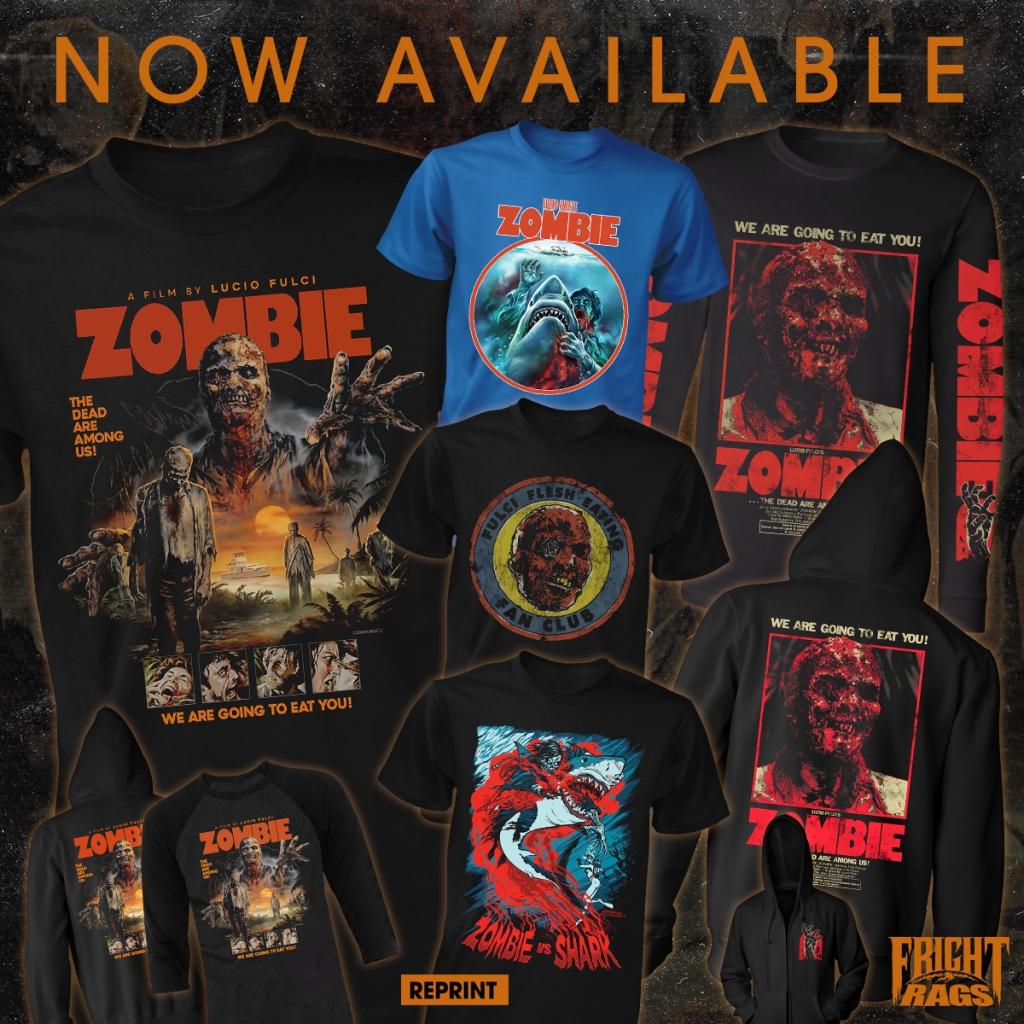
Without Zombie, I would probably never have discovered gems like Nightmare City, Burial Ground: The Nights of Terror, Hell of the Living Dead, Doctor Butcher M.D., and more.
In recent years, Zombie’s legacy has expanded as the film was released in a beautiful 4K scan. An increasing amount of merchandise has begun creeping onto boutique websites and vendor floors at your local horror convention.
There have been live recordings of Fabio Frizzi’s score, which have nestled their way into my vinyl collection courtesy of Mondo, and I snagged a sweet clay figure of the Conquistador zombie from The Clay Guy at Cleveland’s Cinema Wasteland horror convention.
Even the boutique t-shirt companies like Fright Rags, Gutter Garbs, and Terror Threads have taken a breather from their countless reprints of Michael Myers attire to spotlight Conquistador zombie, his Caribbean comrades, and that unforgettable tagline, “WE ARE GOING TO EAT YOU.”
I’ve even got a fucking woven blanket of the film’s poster that proudly declares “…the dead are among us!”
Hell, it even played at the local Aut-O-Rama drive-in during one of their retro showings to an impressive turnout! Take a gander at Jay Baruchel’s t-shirt in This Is the End, which nods to the film’s famous smackdown.
See where I’m going with this?
To say I adore Zombie is simply an understatement.
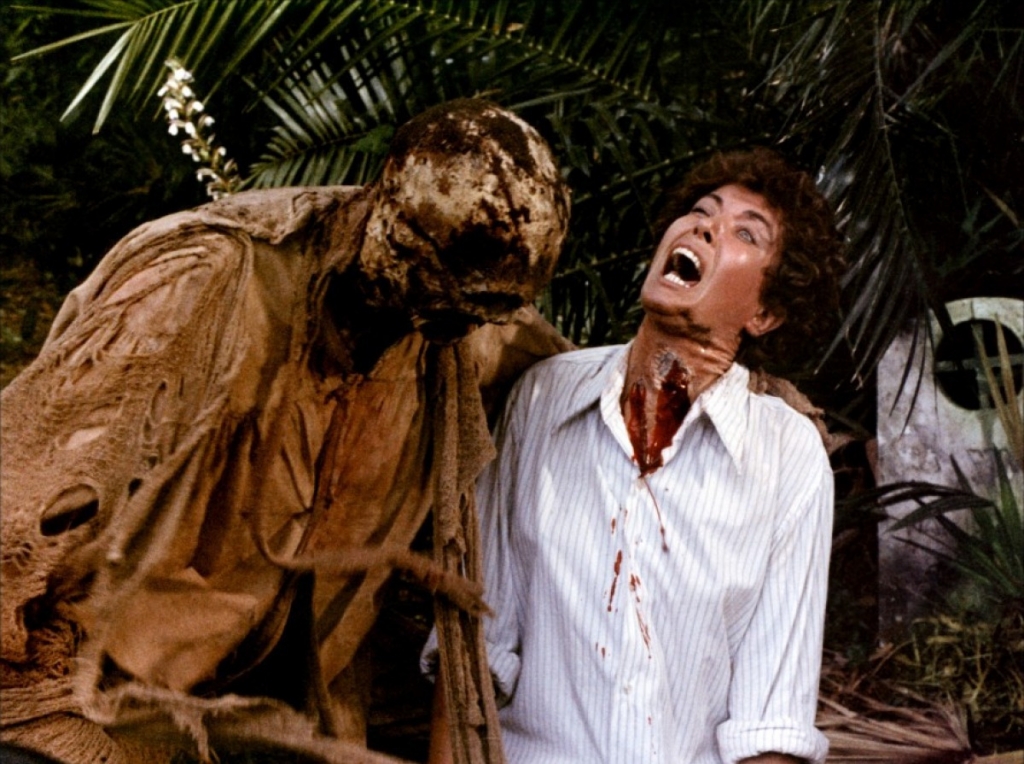
I love it in all its grotesque splendor.
I love showing it to my friends who have never seen it, and I love getting their repulsed reactions to all those superb sight gags Fulci so generously bestowed upon us. I love wearing my t-shirt of the UK VHS box art or the one with Auretta Gay having her jugular torn clean off in a wave of crimson and fire.
I just fucking love it.
It is one of the quintessential entries in the zombie subgenre, and if you’re looking to take a deep dive into the realm of zombie movies, I certainly advise you to add it to the top of your list. It’s everything it needs to be and more, an orgy of gratuity that makes it one of the purest grindhouse movies to sit alongside Cannibal Holocaust, Thriller: A Cruel Picture, The Streetfighter, and Ilsa: She Wolf of the SS in terms of pure badass cinema.
If you want the real deal, look no further.
Much like its famed eye-splinter shock, ZOMBIE not only wedges its expertly calculated brutality into your eye socket, it slices straight into the psyche and lodges itself comfortably into the gray matter, and you’ll be left screaming to the tribal drums of shock and glee.
“The boat can leave now… tell the crew.”


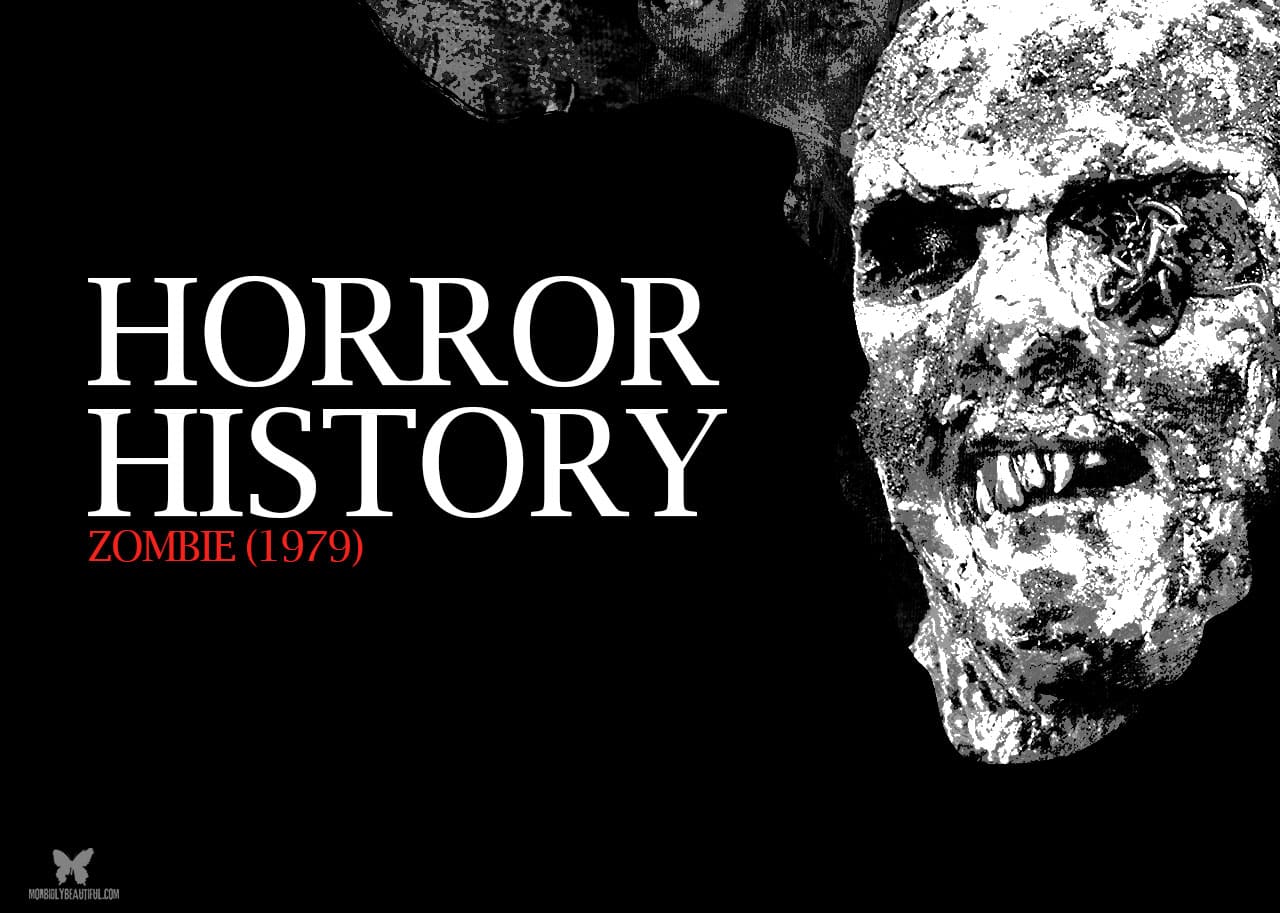
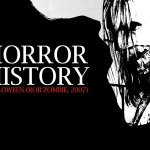
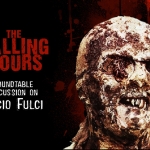
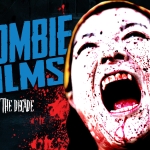


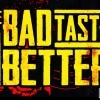




Follow Us!